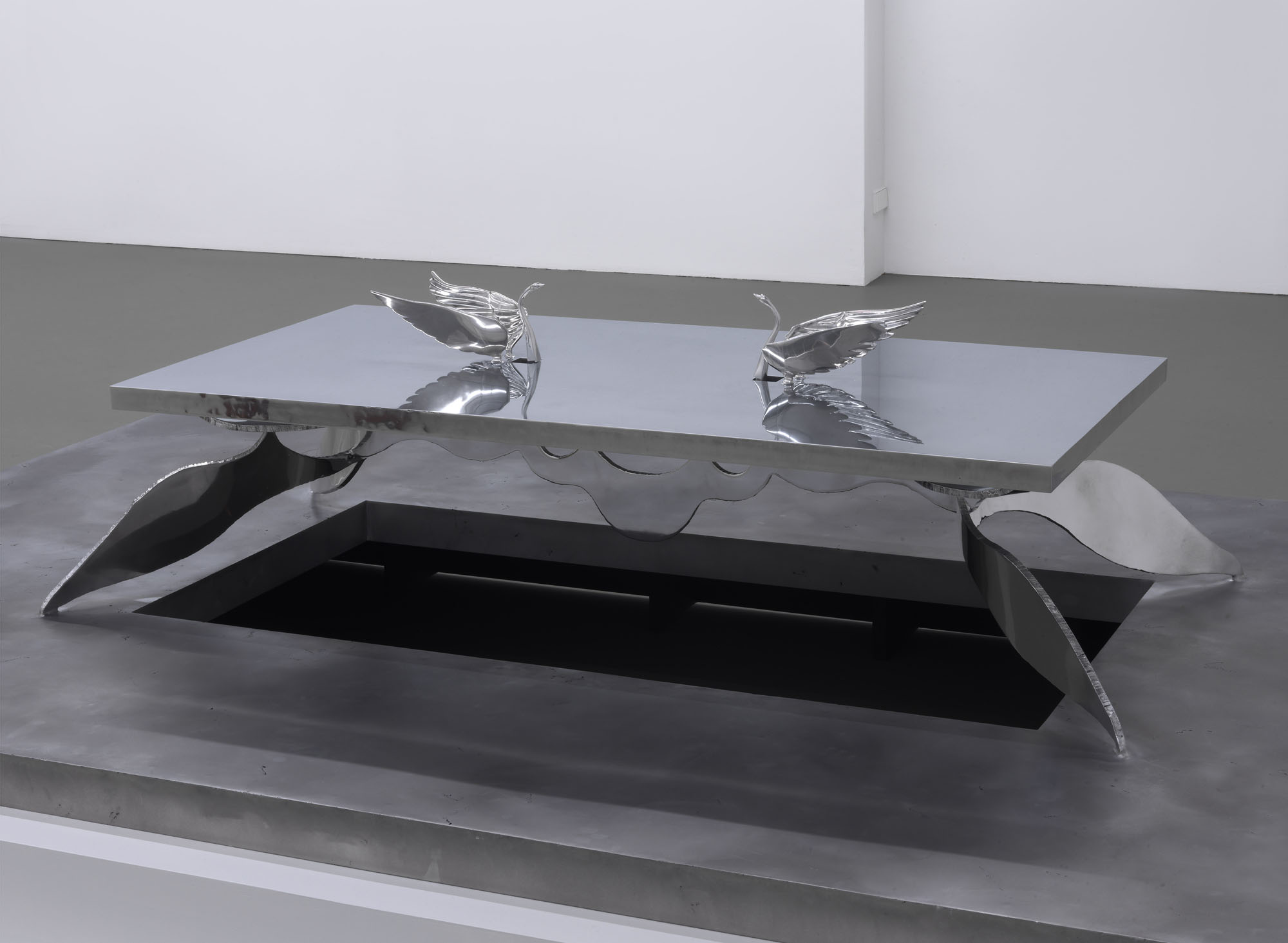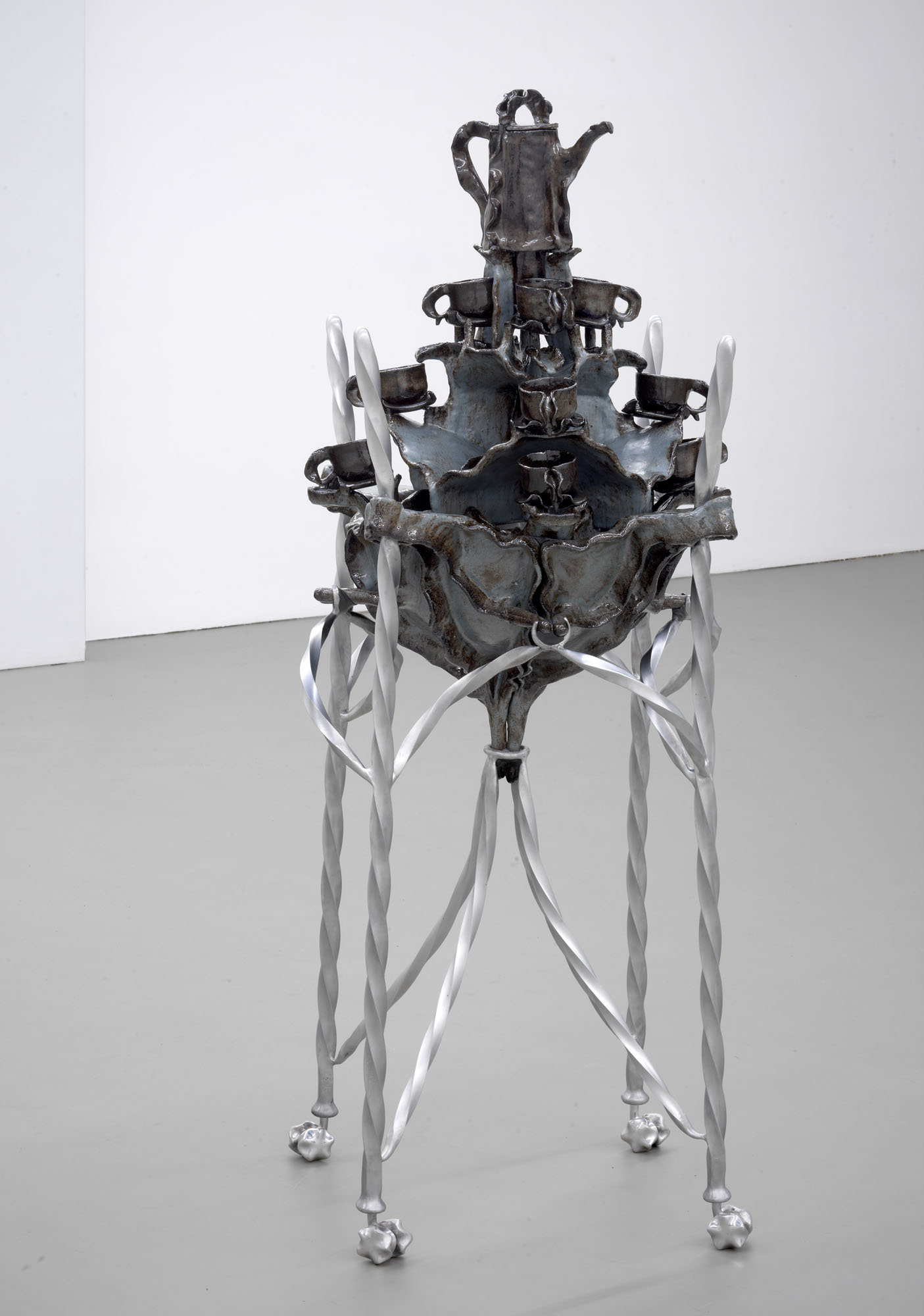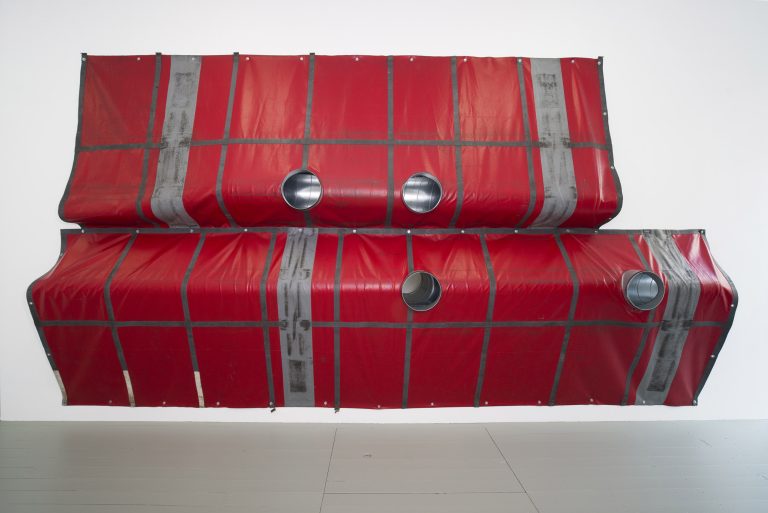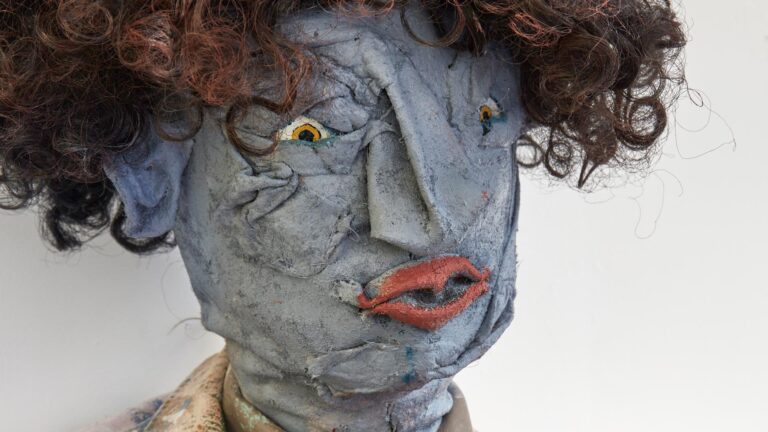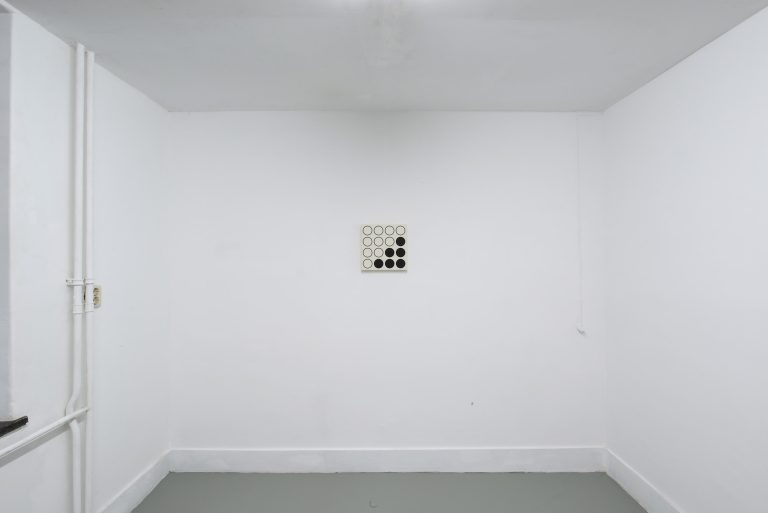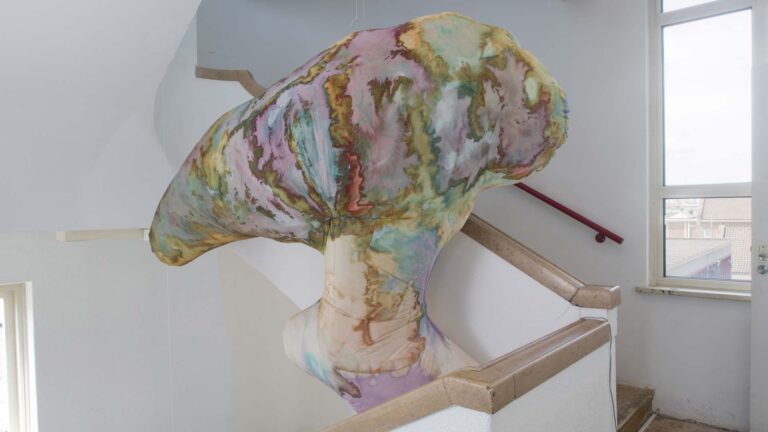Artist: Théophile Blandet
Venue: Galerie Fons Welters, Amsterdam, The Netherlands
Date: January 18 – February 29, 2020
Photography: all images copyright and courtesy of the artist and Galerie Fons Welters, Amsterdam
For his second exhibition at the gallery, Théophile Blandet (1993) created a theatrical installation, comprised of objects that “don’t care to tell you what they are”. Self-sufficient, autonomous, at the same time connected, forming secret alliances with each other – the objects defy each effort at categorisation. There are references to the familiar props of our daily lives, which suddenly lead a life of their own, such as the chair that folds up into a sculpture, the tea set that has become a fountain. They evoke questions on that which usually escapes from attention, which writer Georges Perec labelled as the ‘infra-ordinary’. According to Perec we need to question “what has ceased forever to astonish us”, hinting at the very objects and daily rituals that Blandet turned into abstract sculptures.
Many artists refer to quotidian life, to the habitual, the banal, and use domestic objects in their work as they enable to play with multi-layered meanings. Blandet’s work differs from these endeavours, as he keeps intact the idea and promise of functionality. He connected for instance precisely crafted figurines of swans and clever interlocking systems to two abstract forms, by which the spectator can intuit how these might be linked and become one table. He plays with the imaginative power of forms and seemingly bids his farewell to function; at the same time, he does not abstain from the possibility of practical use within a different context.
What stands out is each object’s materiality and refined detailing. The used materials range from traditional art materials, such as clay, to materials that refer to industrial production, such as steel and aluminium, and the waste material of consumer society, plastic. With great skill, Blandet creates contrasts, plays with expectations and reverses traditional meanings and values. With his sculptures made of plastic he does not plead for sustainable reuse, as many do these days, but suggests to acknowledge the higher value of this maligned material. Vilified, banned, and will some day thus become rare and precious. Plastic is the future gold.
At first sight, the screens seem to be aliens in the exhibition. They are covered with well-known digital images, painted in the amateur style of a Bob Ross painting. Only on the fringes the constantly changing stream of digital information on the internet can be detected. The thick layers of pigment turn the screen into a physically present canvas; furthermore, they block the spectator’s access to the internet and its illusion of omniscience. Through these interventions the screens start to accord well with the other objects in the overall installation. The friction between presence and illusion creates a heightened awareness of the here and now, as well as the realisation of an elusive world hiding behind familiar appearances.
[Louise Schouwenberg]
Théophile Blandet, 2020, exhibition view, Fons Welters, Amsterdam
Théophile Blandet, 2020, exhibition view, Fons Welters, Amsterdam
Théophile Blandet, 2020, exhibition view, Fons Welters, Amsterdam
Théophile Blandet, 2020, exhibition view, Fons Welters, Amsterdam
Théophile Blandet, 2020, exhibition view, Fons Welters, Amsterdam
Théophile Blandet, 2020, exhibition view, Fons Welters, Amsterdam
Théophile Blandet, Abstract Strategy (icw Audrey Large), 2019, PLA, polypropylene, PETG, aluminium, American walnuts78 x 64 x 64 cm, photography by Gert Jan van Rooij
Théophile Blandet, Abstract Strategy (icw Audrey Large), 2019, PLA, polypropylene, PETG, aluminium, American walnuts78 x 64 x 64 cm, photography by Gert Jan van Rooij
Théophile Blandet, Bureau Papillon, 2020, PCL, PMMA, PETG, nylon, glass fibre, steel, 2 parts: 113 x 97 x 71 cm and 115 x 100 x 71 cm, photography by Gert Jan van Rooij
Théophile Blandet, Bureau Papillon, 2020, PCL, PMMA, PETG, nylon, glass fibre, steel, 2 parts: 113 x 97 x 71 cm and 115 x 100 x 71 cm, photography by Gert Jan van Rooij
Théophile Blandet, Bureau Papillon, 2020, PCL, PMMA, PETG, nylon, glass fibre, steel, 2 parts: 113 x 97 x 71 cm and 115 x 100 x 71 cm, photography by Gert Jan van Rooij
Théophile Blandet, Add-on wings, 2020, aluminium, 72 x 157 x 79 cm, photography by Gert Jan van Rooij
Théophile Blandet, Add-on wings, 2020, aluminium, 72 x 157 x 79 cm, photography by Gert Jan van Rooij
Théophile Blandet, Namibia Conflict, 2020, ultra wide screen, oil paint, 37 x 120 x 20 cm, photography by Gert Jan van Rooij
Théophile Blandet, Plastic Chair (TPC 3), 2019, acrylic, PETG, 78 x 70,5 x 40 cm, photography by Gert Jan van Rooij
Théophile Blandet, Plastic Chair (TPC 3), 2019, acrylic, PETG, 78 x 70,5 x 40 cm, photography by Gert Jan van Rooij
Théophile Blandet, Plastic Chair (TPC 3), 2019, acrylic, PETG, 78 x 70,5 x 40 cm, photography by Gert Jan van Rooij
Théophile Blandet, Tea fountain, 2020, ceramic, aluminium, 141 x 57 x 57 cm, photography by Gert Jan van Rooij
















